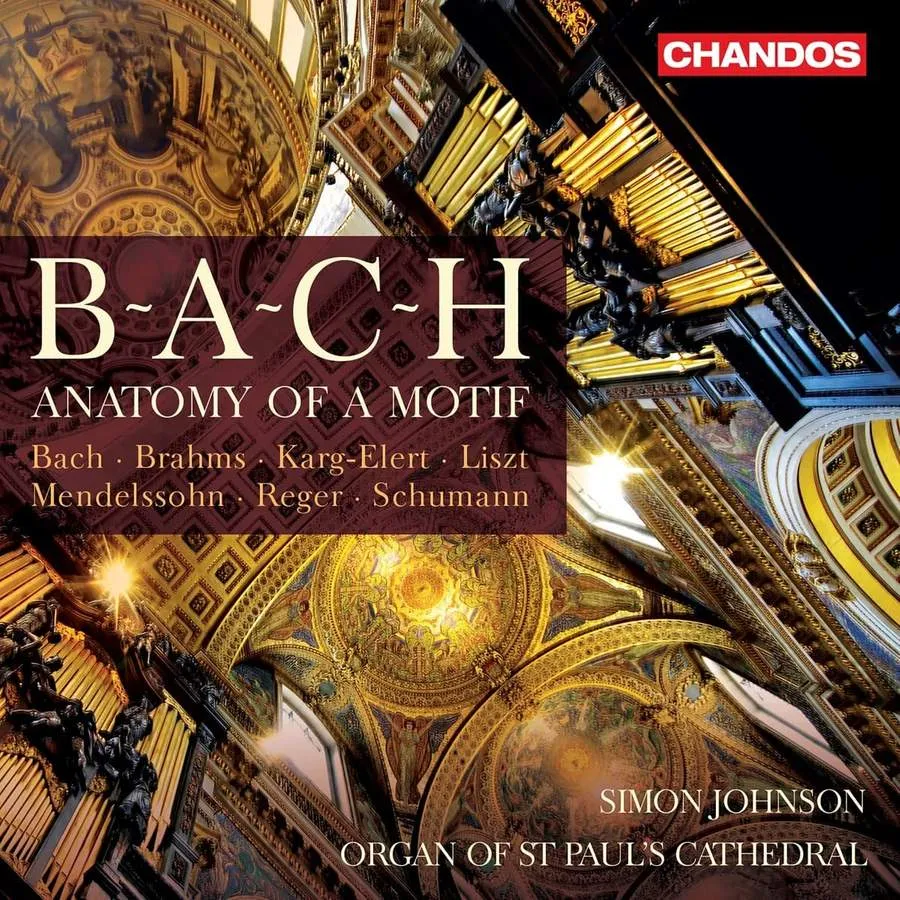
B-A-C-H Anatomy of a Motif JS Bach: Art of the Fugue in D minor, BWV 1080 – Contrapunctus XIV a4 (completed L Rogg); Ricercar à 6; Brahms: Fugue, WoO 8; Karg-Elert: Passacaglia and Fugue on B.A.C.H, Op. 150; Liszt: Präludium und Fuge über den Namen B.A.C.H, S260; Mendelssohn/Lutz: Sonata on the Choral ‘O Haupt voll Blut und Wunden’; Reger: Fantasie und Fuge über B.A.C.H, Op.46; Schumann: Sechs Fugen über den Namen ‘Bach’ Simon Johnson (organ) Chandos CHSA 5285(2) (CD/SACD) 135:06 mins (2 discs)
As Simon Johnson admits, presenting two hours of music based on just four notes doesn’t sound a tantalising prospect, but this double album is full of revelations. He acknowledges the part Covid has played in the project, giving him time to practice these seldom-performed – and sometimes daunting – works. His strategy, taking Die Kunst der Fuge with Lionel Rogg’s new ending as a starting point, has been to follow the B-A-C-H trail from the 19th-century Bach revival to some very different homages in the 20th.
Felix Mendelssohn’s legendary improvisation on ‘Oh sacred head’ was inflated by Rudolf Lutz into a charming three-movement sonata, and Johnson follows this with Schumann’s edgier and very interesting tribute, Sechs Fugen über den Namen ‘Bach’. Then comes Brahms’s response to Schumann’s work, Fugue in A flat minor, which reflected the reverence in which both Brahms and Clara Schumann (to whom Brahms sent a copy) held Bach. As David Gammie observes in his excellent liner note, Brahms told his friend, the violinist Joseph Joachim, that its morbid atmosphere frightened him, to which Joachim replied that to him the music spoke of ‘unity and beauty and blessed peace’, which seems to me more accurate.
Enter then Franz Liszt, with his Präludium und Fuge über den Namen B-A-C-H, an extraordinary work which John Ogdon described as ‘a Mahlerian ride to the abyss’; its spooky emergence from infernal regions leads to fireworks which draw on all the resources of the organ. Johnson’s brilliant playing does this work full justice, but both the acoustic and the instrument on which we hear these pieces – the 17th-century organ of St Paul’s Cathedral – can be problematic. The cathedral’s billowing, soupy echoes do no favours to the austere, angular perfection of the pieces by Bach himself.
Johnson rounds off his pilgrimage with two curiosities. Max Reger’s Fantasie und Fuge über B-A-C-H goes to every conceivable extreme; as the composer himself said, ‘to the outer limits of the harmonically and technically possible’. And Sigfrid Karg-Elert’s Passacaglia and Fugue on B-A-C-H takes the argument into a new soundworld, with cinematic effects. Altogether, this is a remarkable survey, brilliantly executed.
Michael Church
More reviews
Mendelssohn in Birmingham, Vol. 2
Shostakovich: Symphony No. 6 & Symphony No. 14
Mahler: Symphony No.5